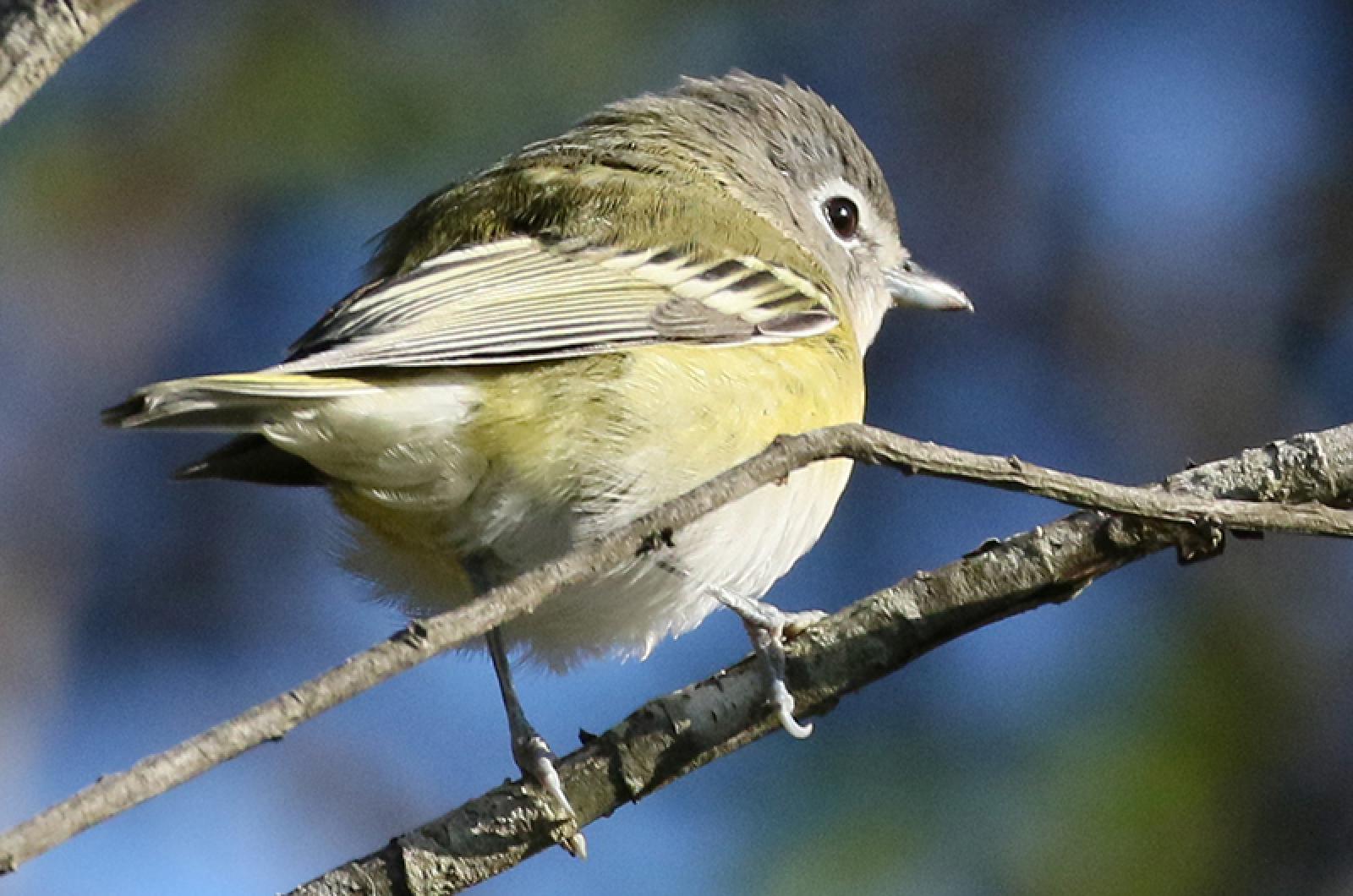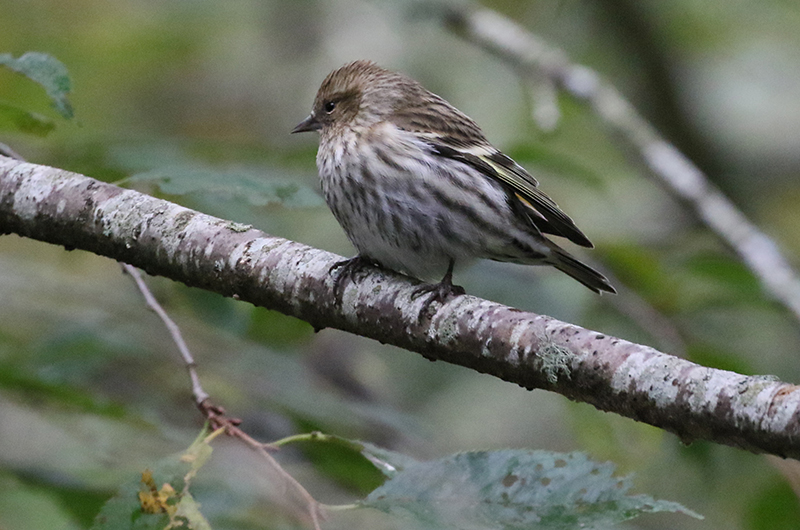Songbirds cannot swim. They have good vision, however, and these nocturnal migrants can generally see when they are no longer flying over land and they turn around and head back to land. They arrive from the north or northwest, and occasionally they do not notice they are over the water and keep flying. After a night-long flight they get tired and look for the nearest land.
The lucky ones who are still out at sea may find a ship to land on, where they can rest and feed on the bugs also travelling with the ship. Once rested, they may leave the ship, heading back to land, or they may stay on the ship until she comes within sight of land.
LJ Blackwell was in a ship 70 miles south of Chappaquiddick when he spotted eight species: red-breasted nuthatch, house wren, Carolina wren, gray catbird, brown thrasher, song sparrow, three yellow-rumped warblers and a peregrine falcon.
What happens if they do not find a ship out there? On Oct. 10, Dan Benedetto had an exhausted red-breasted nuthatch come in off the ocean and land on his elbow, staying there for 45 seconds before it flew off into the dunes. On Oct. 11, Matt Pelikan observed a flock of about 40 pine siskins at Long Point as they flew in off the ocean. Decades ago, one of my more unusual sightings was that of two small birds flying from the ocean to Norton Point — a red-breasted nuthatch and a golden-crowned kinglet landed on a dune near me, beaks open and panting. These are the lucky ones.
Bird Sightings
Pine siskins arrived this past week and are abundant and widespread. Pete Gilmore had a pine siskin at Sheriff’s Meadow sanctuary on Oct. 7, and the next few day siskins and hawks put on quite a show at the Gay Head Cliffs. Mr. Gilmore saw about 100 siskins at the cliffs on Oct. 8 and the next day he was joined by Allan Keith and Lanny McDowell. there were at least 50 siskins along with more than 50 migrating sharp-shinned and Cooper’s hawks, and all three species of falcons. Bridget Dunnigan and Sea Williams spotted five pine siskins near the northeastern corner of the state forest on Oct. 9 and David Scott saw 50 flying over the Chappy ferry. David Padulo spotted 20 of them at Felix Neck on Oct. 10, Kari Cohen spotted 30 at the Farm Institute along with a peregrine falcon on Oct. 11. Hans Goeckel had a siskin visiting his yard on Oct. 11, and on Oct. 12 Penny Uhlendorf counted 49 of them in her yard, where they were “somewhat bullying the nuthatches and chickadees.”
The second notable sighting of the week is a buff-breasted sandpiper first found and carefully described by Ted Gilliland at the Farm Institute. This sandpiper was spotted again the next day by Lanny McDowell and Pete Gilmore, when they also observed a male American Kestrel perched on one of the blue silos, and a peregrine or two “to keep all the birds on the lookout.”
Two other new species for the season (white-crowned sparrow and indigo bunting) were found by Allan Keith at Squibnocket on Oct. 9.
Plenty of other songbirds are around too. Susan Whiting has been entertained by her feeders and bird baths, where she has spotted two yellow-rumped warbler‘s and two eastern bluebirds along with the regulars. On Oct. 10 her first dark-eyed junco of the season was spotted. She also spotted a female Baltimore oriole, a female purple finch, an eastern phoebe, eastern bluebirds, two red breasted nuthatches and a hairy woodpecker. Lisa Maxfield also spotted a phoebe at Brush Pond that day.
Bob Shriber saw a raven on Oct. 5 in Aquinnah near the herring run. On Oct. 7 Bill Post had a flock of 22 Cedar Waxwings in his Edgartown yard, and on Oct. 9 a couple of red-breasted nuthatches showed up. Lanny McDowell spotted a magnolia warbler on Oct. 8 at Menemsha Hills. Also that day, Olsen Houghton found a first winter male common yellowthroat near his house. The next day, Albert Fischer had a blue-headed vireo at Squibnocket, and David Padulo went up-Island and found golden-crowned kinglet, ruby-crowned kinglet, palm warbler, eastern phoebe and red-breasted nuthatch. On Oct. 11 Frank Amazeen had a juvenile male rose-breasted grosbeak show up at his feeder. the same day Jerry Twomey had a female black-throated blue warbler and a female purple finch in his yard. Cynthia Bloomquist spotted three Baltimore orioles in Aquinnah on Oct. 11.
At least two bald eagles are on the Island now. At Waskosim’s Rock Reservation on Oct. 5, Walt Looney, Russ Salisbury and Don McLagan got good looks at two bald eagles (an adult and a juvenile) that flushed from the trees and circled an open field several times. Martha Moore reports an adult bald eagle was eating fish on the Long Point osprey nest on Oct. 11, and the same day Laura Hearn spotted one flying over South Road near the West Tisbury-Chilmark line. On Oct. 12, Laura Murphy spotted an adult bald eagle as it flew over Murphy’s Pond.
Jeff Bernier spotted four species of plovers at Little Beach on Oct. 8 — golden, two piping, two semipalmated, and at least 35 black-bellieds.
David Padulo counted over 100 black-bellieds the next day. While walking near the cliffs at Gay Head on Oct. 11, Kari Cohen spotted a sandhill crane, which flew overhead, calling.
Is our resident crane still in Edgartown?
Finally, Gus Ben David had six immature male red-winged blackbirds visit his feeders, an unusual sighting for this late in the season.
Please email your sightings to birds@mvgazette.com.
Robert Culbert is an ecological consultant with Nature Watch LLC living in Vineyard Haven.










Comments
Comment policy »